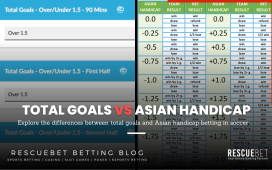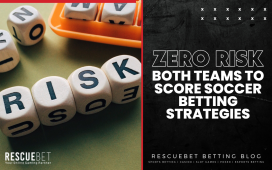Punters across the globe make their first bet based on instincts, whether the bets have the potential to win a lot or lose everything you stake. While punters may have varying degrees of success when they’re new to betting, the professionals tend to have a higher success rate than a novice bettor. The reason is professionals have experience in betting, and more importantly, each expert bettor has a betting model or multiple betting models. With the help of betting models, punters have an advantage and can profit by adopting it at the right time, whether for a game or bet, the odds, the winner, the stats, etc. A model can spot the probability of an outcome or multiple outcomes occurring under varying circumstances. Throughout a wager, a punter can stand to profit from these probabilities as they play out.
Building A Betting Model?
While the sound of building a betting model can seem like a daunting task, it isn’t. It’s not the same as building a financial, investment, statistical or mathematical sports betting model. So while trying to understand how to build a betting model may seem complicated, we break it down so that any novice punter can create an efficient model and test it out. You can build a betting model in 5 easy steps:
1. Define The Premise Of Your Betting Model
When creating a betting model, it’s essential to determine what is the purpose of the betting model and, more importantly, what it is supposed to resolve. Without a premise, it’s easy to lose focus on your main objective or feel overwhelmed by different ideas. An example of a betting model’s premise is looking at the top-scoring leagues across over 150+ countries (with each country possessing several leagues). So a punter, in this case, is looking at betting on high-scoring games, with high-scoring teams in high-scoring leagues. Similarly, a punter could go the opposite way and search for low-scoring games and take advantage of betting on draws. In this case, a punter’s objective is to look for low-scoring games with low-scoring teams in low-scoring leagues.
2. Identify Key-Metrics
Key metrics are essential variables that determine what you measure when you make a betting model. Examples of critical metrics include the number of teams, wins, losses, win percentage, red cards, yellow cards, corners, etc. A punter could get a little more specific and include teams that always win when leading at halftime, teams that lose when conceding first, teams that still recognize against top-tier teams, goal deficits for relegation when teams are on level points, etc. If we use the example from above, a punter could look at most goals scored across a season, across multiple seasons (3 and 5 years), average goals scored per game, average goals conceded per game, the ratio of goals scored at the start versus the middle versus the end of the season and more.
3. Verify And Collect Information
You can then upload verified information from a trusted source to an excel sheet. Some websites already give you this information and let you download a format you’d like to use. Punters must use verified information provided by the FA, FIFA, UEFA, etc. It’s essential to record your data in a tabulated format so that you can scroll through it quickly, look for specific information or rearrange loads of data in a meaningful way.
4. Choose A Model Or Identify One
At this juncture, you can start to rearrange your data based on what you’re looking for in terms of high-scoring games, most cards issued, etc. You can use multiple models and open a new set of data in a new tab. If you don’t have a model in mind, don’t worry. You can still identify a model by getting ideas when you go through the information at your disposal. While recognizing a model takes time, you also get to be thorough.
5. Backtest
Backtesting a model is critical in defining how successful your model will be in predicting future outcomes. To backtest a model, all you need to do is see if your model checks out during the next game or sequence of games before you put in any money.
























